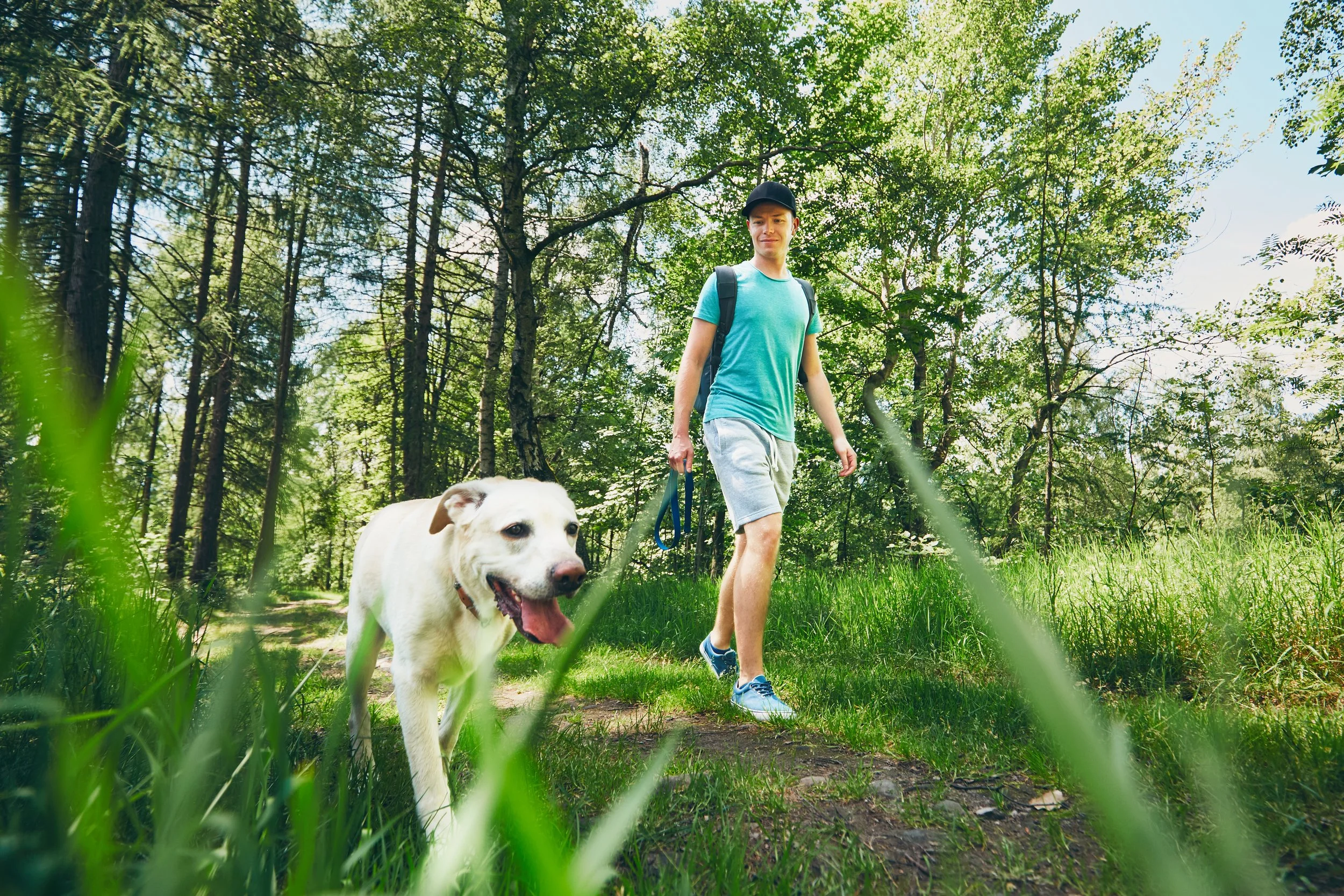Dress Your Dog For Trail Success
The gear you choose for an outdoor excursion can make or break any adventure you take, especially in the colder months. If you are hitting the trails with four-legged friend, it is important to ensure they are just as prepared for the cold journey. Keep in mind the climate when you are packing your pet’s pack. The necessary gear will help make the experience comfortable and safe for all. Below is a list of dog hiking gear and goods you need to ensure a happy hike during winter.
Paw Protection
Not all of us can brave the bitter temperature drops by baring our feet on the frozen ground. Just as you protect your own skin from chapping and cracking during the colder months, it is important to also protect your pet’s paws. Paws can crack and chap in icy or abrasive conditions on trails but you have options to keep your pack safe and protected. When it comes to winter hike pet paw protection, you can invest in booties, although they require some training practice, or use special wax designed for colder climates. Paw wax does not protect your dog from cutting paws on a sharp rock or rough terrain, nor does it prevent snow and ice from building up between your dog’s paw pads. In some cases, boots would be a better fit.
Nourishment
Just like you have nuts, raisins, and granola bars to power through your adventures, your pet also needs nourishment. Make sure to pack extra Triumph Jerky Bites when you hit the trails during the winter months. Hiking in snow can take a substantial amount of energy so it is important to pack the snacks to keep up the calories. Food and treats could potentially freeze in the wintry weather, so keep them close to your body to prevent that from happening. When it comes to packing water, you might think the rivers and streams along the trail will be more than enough, but when the temperatures drop, those bodies of water you once relied on are often frozen. Snow is not an adequate hydration replacement for your pet.
First Aid
You never know when an injury can occur and when you are in the great outdoors, the odds of an accident increase. It is important to carry the most basic essential for a hiking trip and especially for wintery months A few of the items to carry in your first aid kit would include: hydrogen peroxide to disinfect cuts, scissors with rounded tips to trim hair around wounds, bandages and gauze pads, tweezers to remove foreign objects in a wound, and a small sock or bootie to protect a wounded foot. If you are prepared, you will have a more successful experience. There are several things you’ll need to add to your kit for winter hikes, like Vaseline, vet wrap, a small insulated blanket, sunscreen, and any additional items you might need to ensure a fun, safe experience.
Identification and visibility safety
No matter how well-trained your dog may be, there are instances where they just will not respond to your call. To ensure you always have the whereabouts of your pet, make your dog carries an I.D. in case something happens on the trail and you get separated. Although it might be obvious, the I.D. should have your cell phone number so that someone could contact you. Dogs can get easily spooked and, in the woods, there are plenty of distractions to chase and sniff. Microchipping your dog is the best way to keep track of your pet and if you are exploring at night, make sure your pet is illuminated in case they disappear into the night.
Leave No Trace
The cardinal rule of trail experience is to Leave No Trace, a guideline not always followed by adventure-seekers. It applies to human-only hiking as well as hiking with your four-legged pal. Dogs can have a significant impact on wildlife, nature, and vegetation. It is important to help your pet follow the LNT principles. Always make sure to bring waste bags and small shovel when you hit the trails. Another way to ensure you are following the LNT principles is to avoid making fires even if the temperatures are bitterly cold. You can still combat the cold with warmer clothes for you and your pet.
Warmth and Protection
Bundle up! Breeds with shorter hair are likely to need extra help with staying warm but in bitter temperatures, all dogs might need more than just their natural fur coat to be toasty. The harder your dog works, the warmer they get. The best way to combat varying temperatures is by layering clothes. There are various jackets for pets available for purchase, you’ll just need your pet’s measurements. If you are camping in the cold with your pet, it would be wise to bring your pooch a sleeping bag as well. Make sure the gear is wind and waterproof to ensure the ultimate comfort for them.
Lead Gear
Most trails and parks require four-legged guests to stay on a leash so it is important that you pack their leash and for extra control, pack a harness. Although plenty of dogs can be excellent trail explorer without the ropes, it is best to follow the park’s rules. A superior quality leash will help the trek and there are plenty of options depending on your needs. Ensure that the collar or harness is loose enough that you can easily slip your finger underneath, but do not have it loose enough that it could slip off resulting in a runaway pet.
Backpacks
Most hikers and backpackers know the exact weight of their bags and know the struggle of exceeding the ideal weight for extended journeys in the wilderness. When you have a four-legged friend, you do not always want to carry the extra weight of pet food and water, you can get their own backpack. If your pet has their own bag, you can train them to carry their own food and water to lift the extra burden from your own pack. As a rule of thumb, your dog's pack should never exceed 25% of their body weight. Be smart when packing for your buddy - they can't always tell you when their pack is too heavy.






















